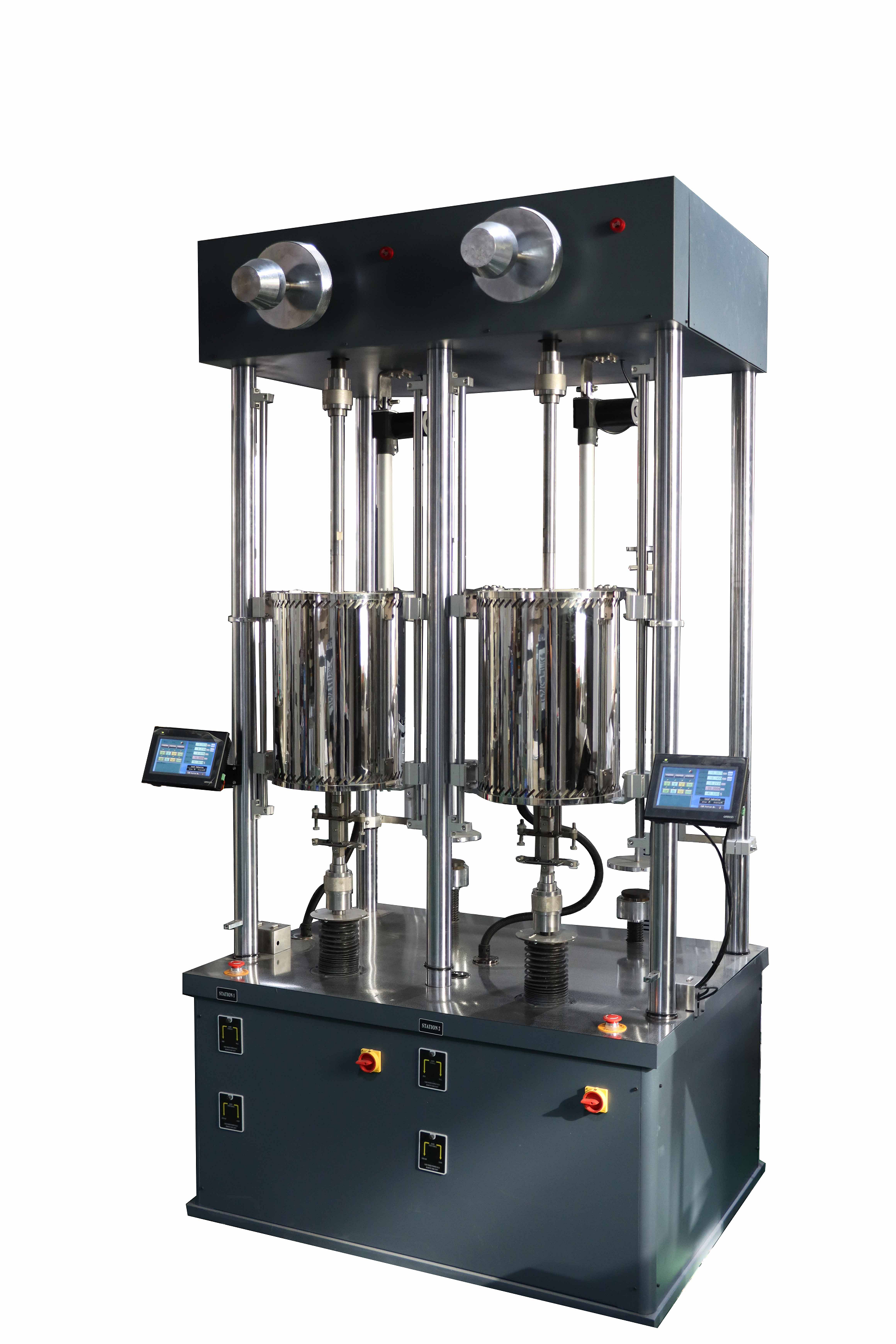ERJ-100 dual-station microcomputer-controlled mechanical creep and durability testing machine
ERJ-100 dual-station microcomputer-controlled mechanical creep and durability testing machine represents high-end technology integration in the field of material mechanics testing. Its core design revolves around a dual-channel collaborative loading system, which achieves parallel testing capabilities through two independent electro-hydraulic servo actuators. Each channel can apply a dynamic test load of up to ±15kN, and the load control accuracy is better than ±1% F.S, ensuring data reliability in long-term creep tests (material deformation measurement under constant load) and high-frequency durability tests (such as fatigue cycles).

The system adopts full digital closed-loop control technology, synchronously collects multi-channel data at a high rate of 5kHz, and supports advanced control algorithms such as dynamic and static stepping method and amplitude correction method. This design enables the equipment to automatically adjust PIDL parameters and accurately coordinate the phase difference between the dual stations (adjustable from 0 to 360°), thereby simulating the composite effect of multi-directional stress on the specimen in real working conditions.
Core performance and technological breakthroughs
1. Dynamic response and durability
The equipment is equipped with military-grade high-frequency response servo valves and aviation-grade high-speed actuators, with a maximum test frequency of 3Hz (amplitude ±80mm), and the actuator life is up to 100 million cycles. Combined with the American Sequan spoke load sensor (accuracy ±0.05%) and coaxial displacement sensor (range 200mm, accuracy ±0.2%FS), the system can still maintain ultra-low signal drift during long-term testing.
2. Intelligent control and software ecology
The control software under Windows environment supports custom waveform generation (sine wave, triangle wave, trapezoidal wave, etc.) and real-time display of multiple parameters. The test data can be exported to tools such as MATLAB and Excel for statistical modeling, and has the function of test history playback, providing an intuitive basis for failure analysis. The system also integrates self-calibration and automatic zeroing modules to significantly reduce manual calibration errors.
3. Dual-station synergy
The dual channels can independently run tests with different waveforms and frequencies, and can also achieve compound excitation. For example, in the test of automobile stabilizer bars (specimen length 1000–1600mm), one station simulates the vertical vibration of the road surface, and the other station simultaneously applies the steering torsion load to accurately reproduce the complex force scene.
Industry application scenario analysis
Automotive parts verification: Designed specifically for passenger car stabilizer bars, it supports tooling adaptation of 500–1200mm bushing spacing, completes the durability assessment of tens of millions of cycles, and is directly related to the vehicle safety life assessment.
New material research and development: In the fields of aerospace composite materials, metal alloys, etc., dual channels can perform creep (constant load) and fatigue (alternating load) tests respectively to accelerate the construction of material failure models.
Civil structure testing: By coordinating loading to simulate the multi-dimensional stress of bridge bearings, the performance evolution of the structure under long-term static loads and seismic loads is predicted.
Technology evolution and future direction
The current hydraulic system of ERJ-100 uses a 63L/min flow pump station (pressure 21MPa) and a 30kW motor, which operates stably at an ambient temperature of 0–40℃. Future iterations may focus on:
Energy consumption optimization: Introducing variable frequency motors to reduce standby energy consumption;
Intelligent expansion: Integrating AI algorithms to achieve autonomous optimization of test parameters and failure warning;
High temperature coupling test: Combined with environmental chambers to expand the study of creep behavior of materials under extreme temperatures.
"The soul of the test machine is to let the material experience the wind and rain of a lifetime in the laboratory in advance." The double-station design not only improves the utilization rate of the equipment, but also reveals the true limits of materials and structures through **multi-dimensional stress coupling**. As China's manufacturing industry transforms to high reliability, such equipment will become the core foundation for breaking through the "stuck neck" reliability verification technology.
Application case reference
A car company used a similar dual-channel system to perform composite loading on the stabilizer bar with a phase difference of 90°, completed 1.2 million cycles of the equivalent of a 10-year road test within 3 weeks, and successfully reproduced the bushing cracking failure mode, which was 40% more efficient than the single-channel test.








